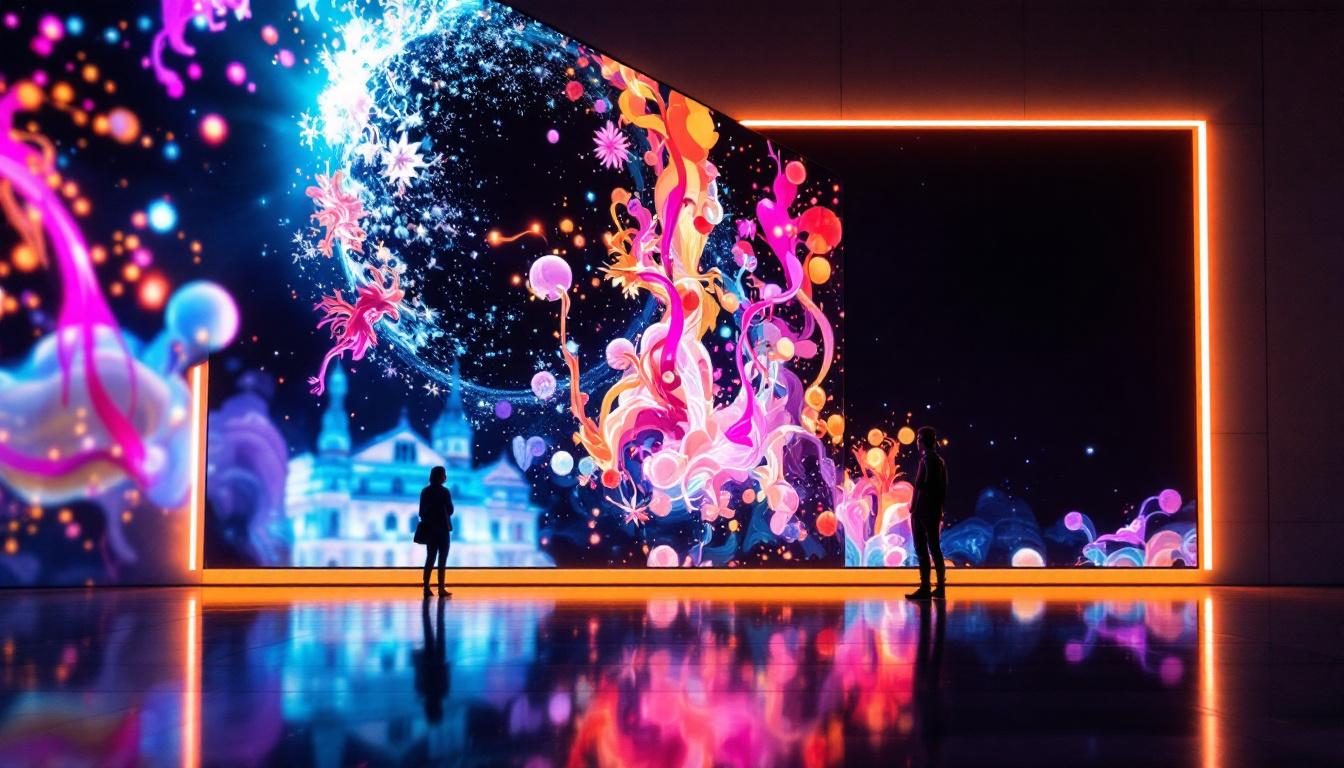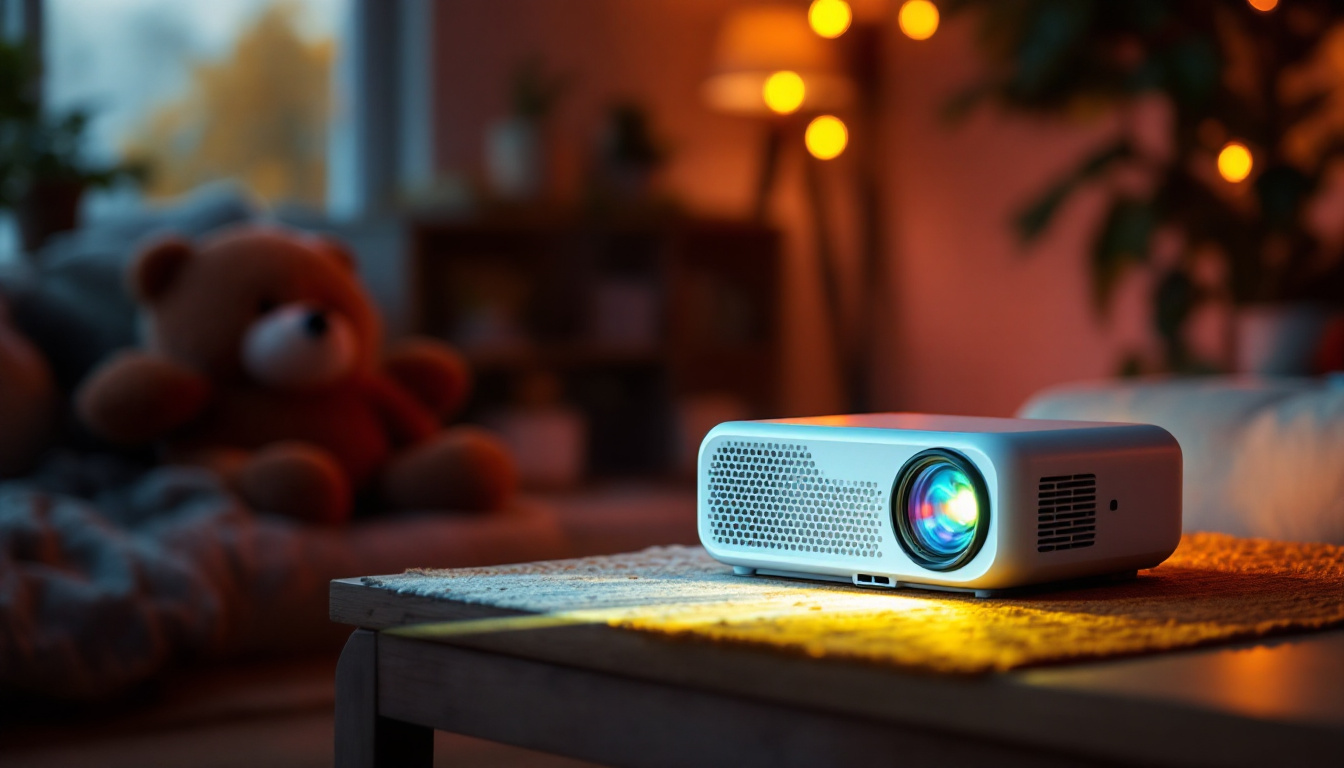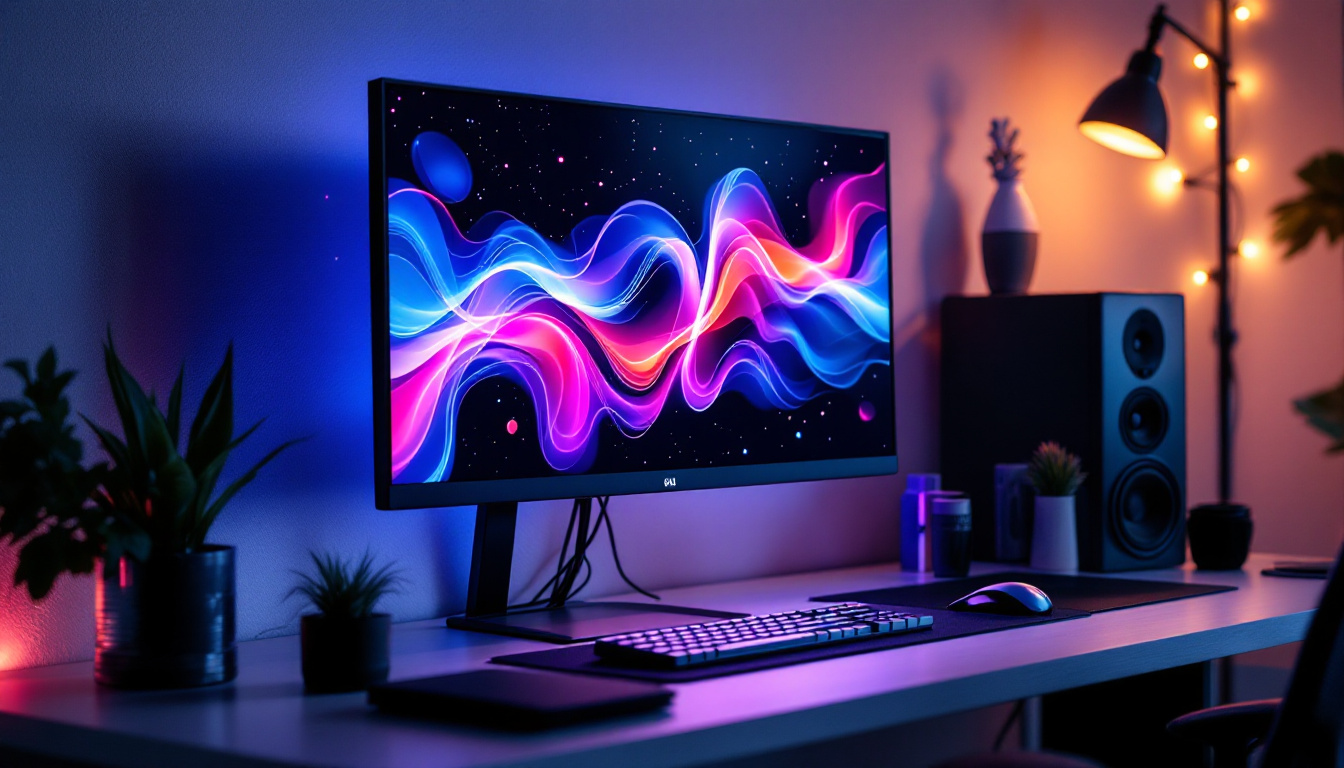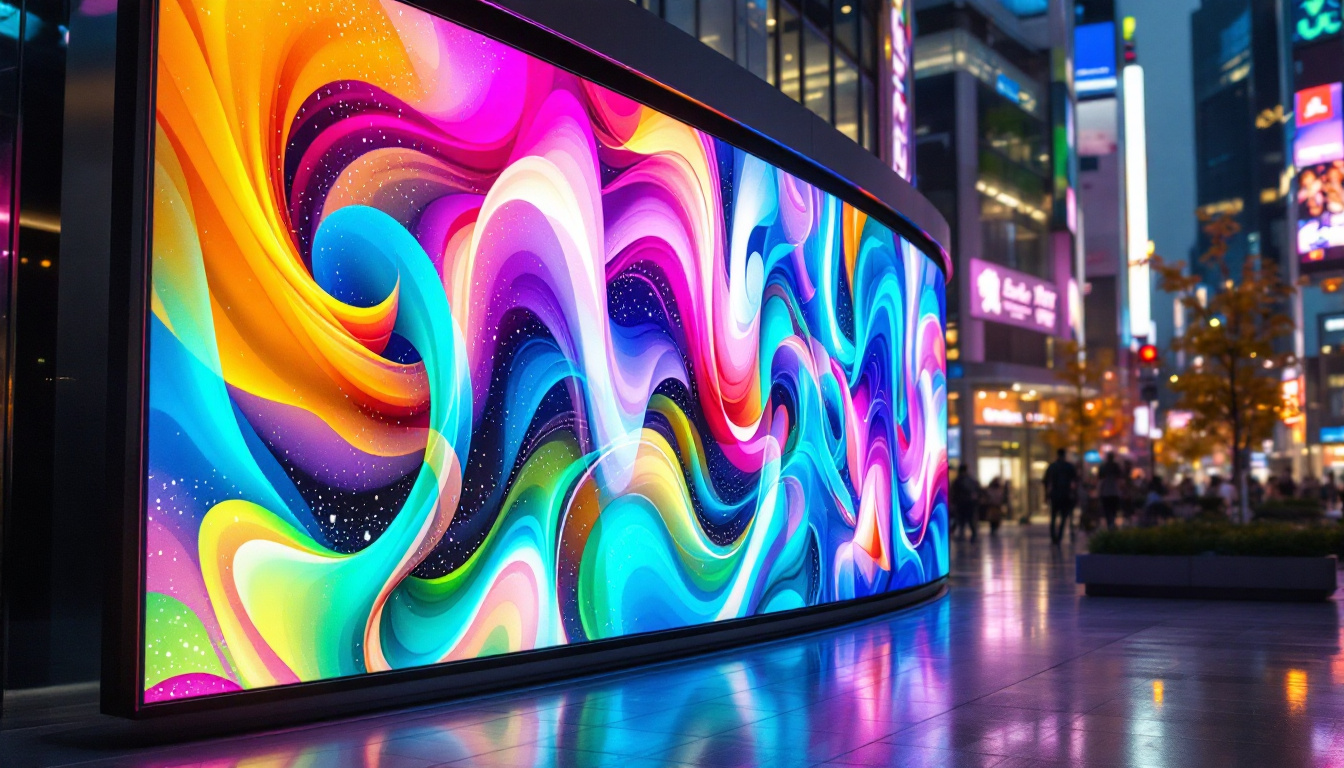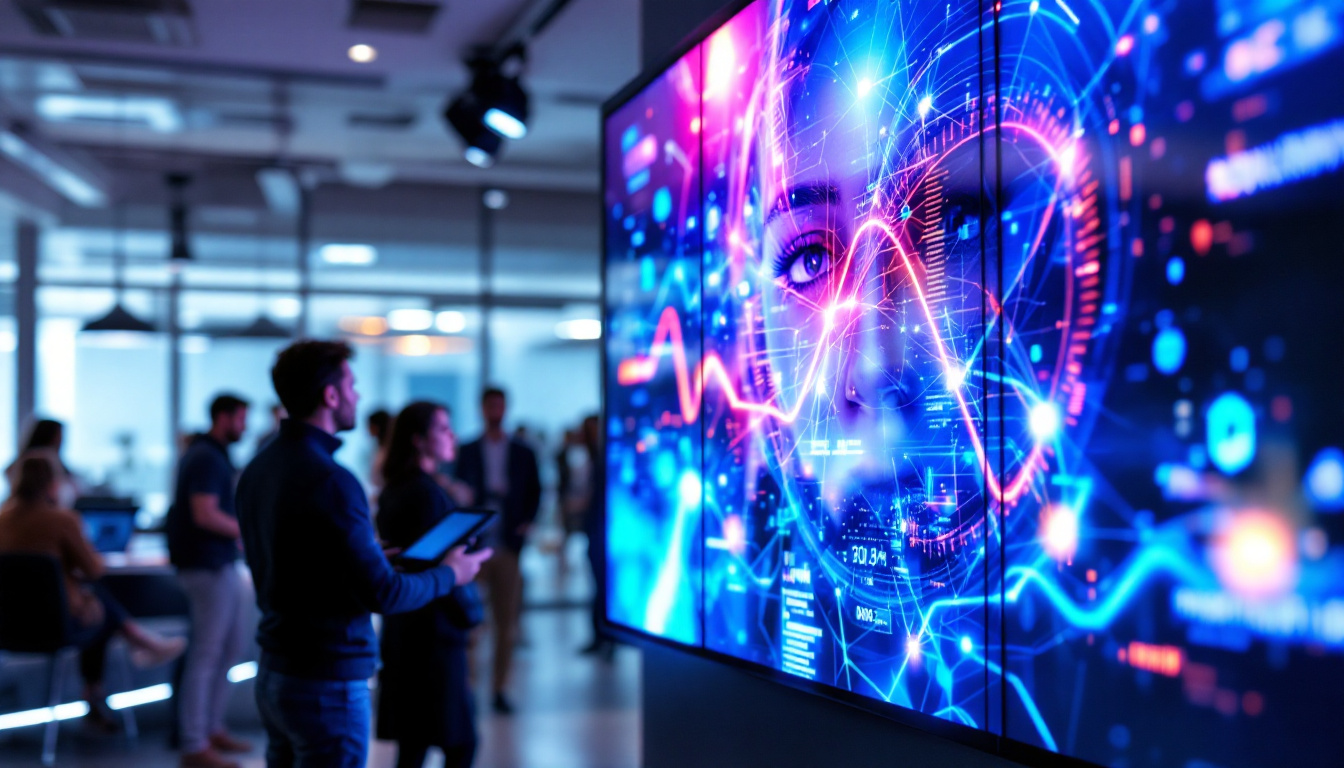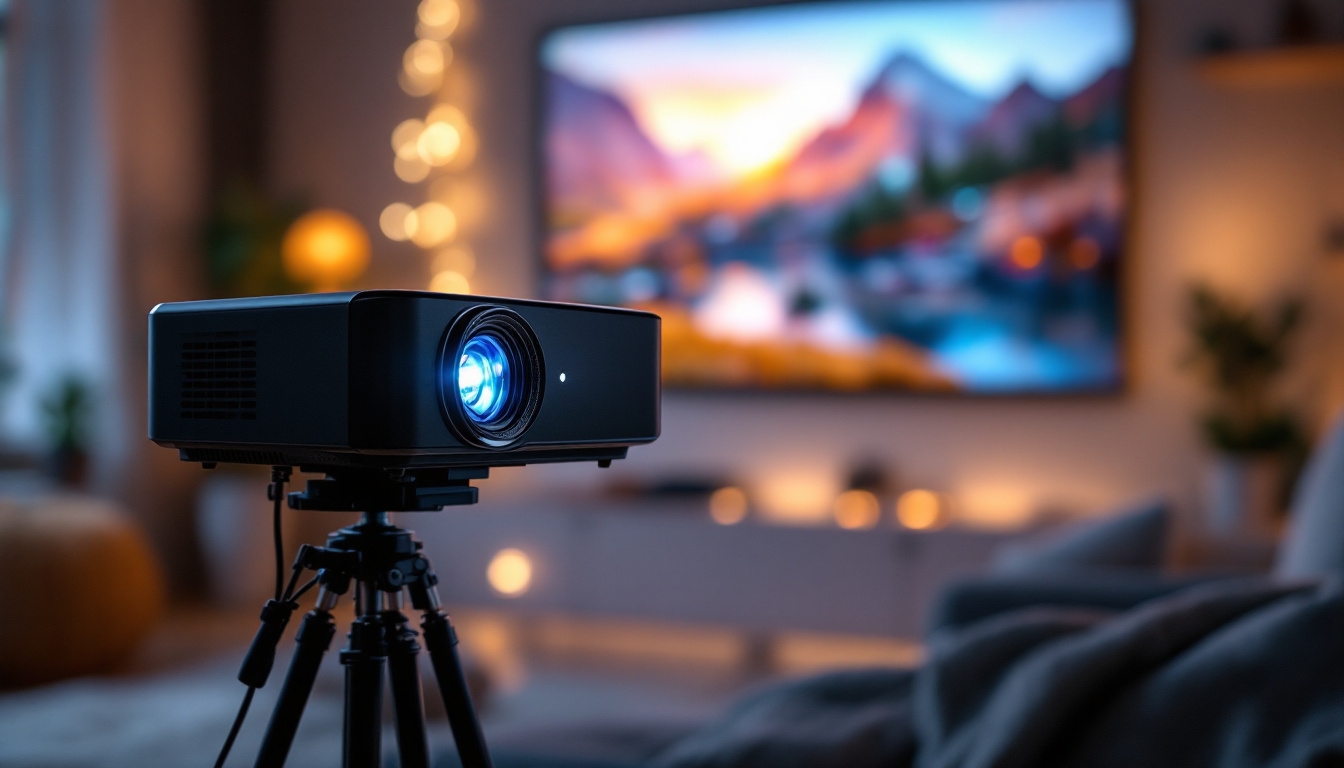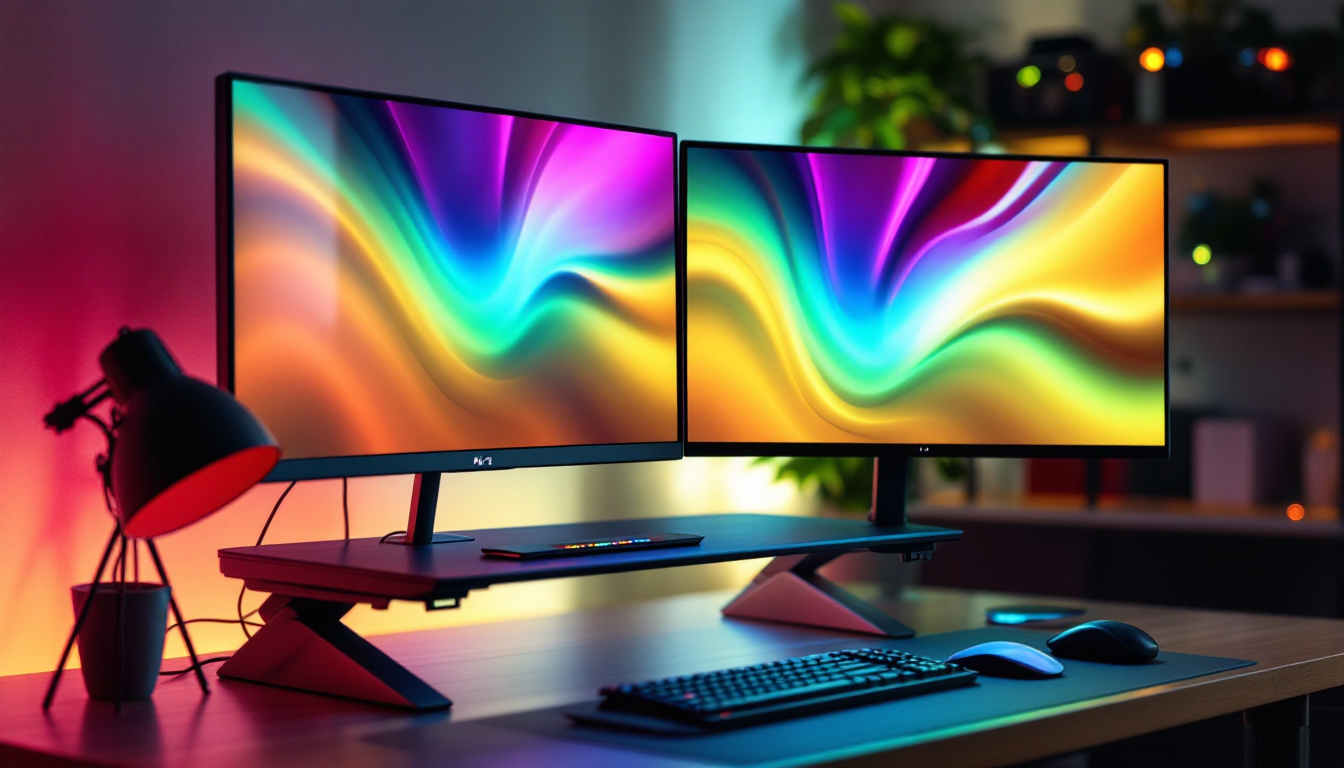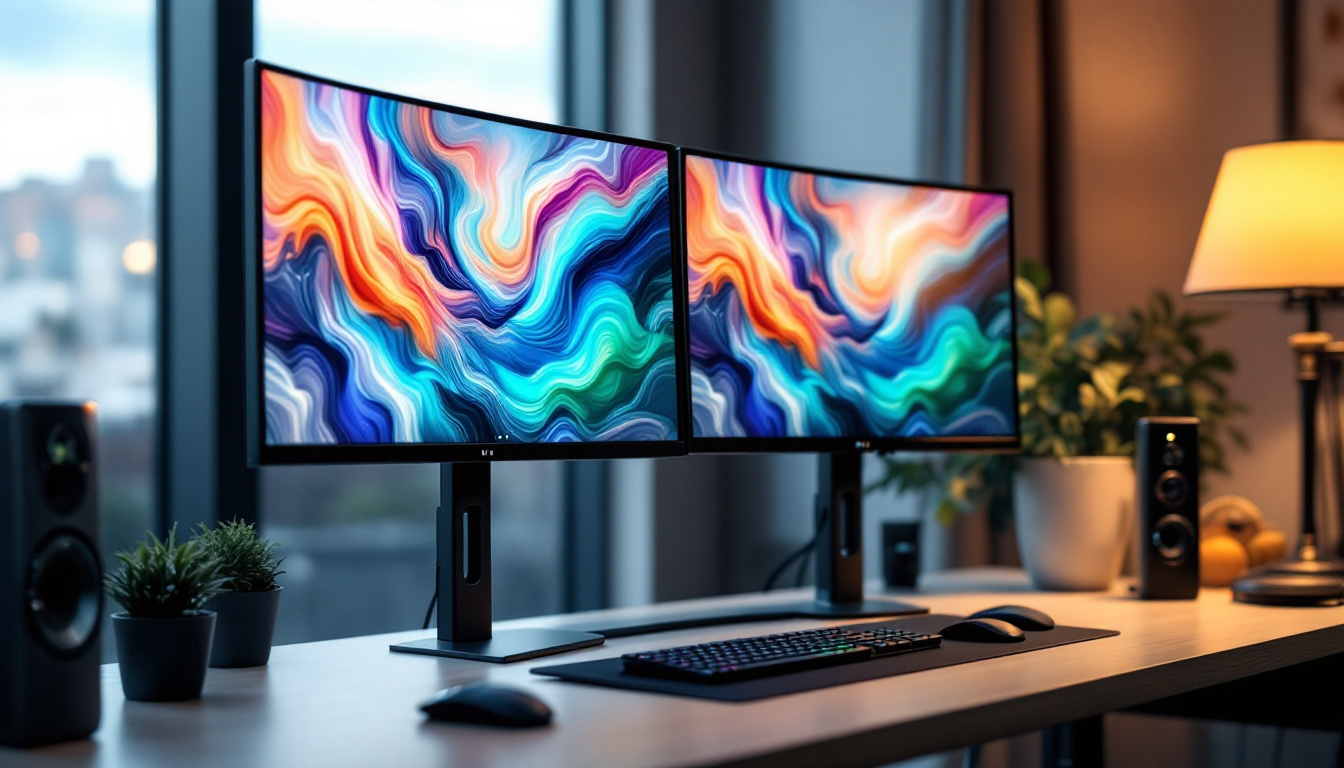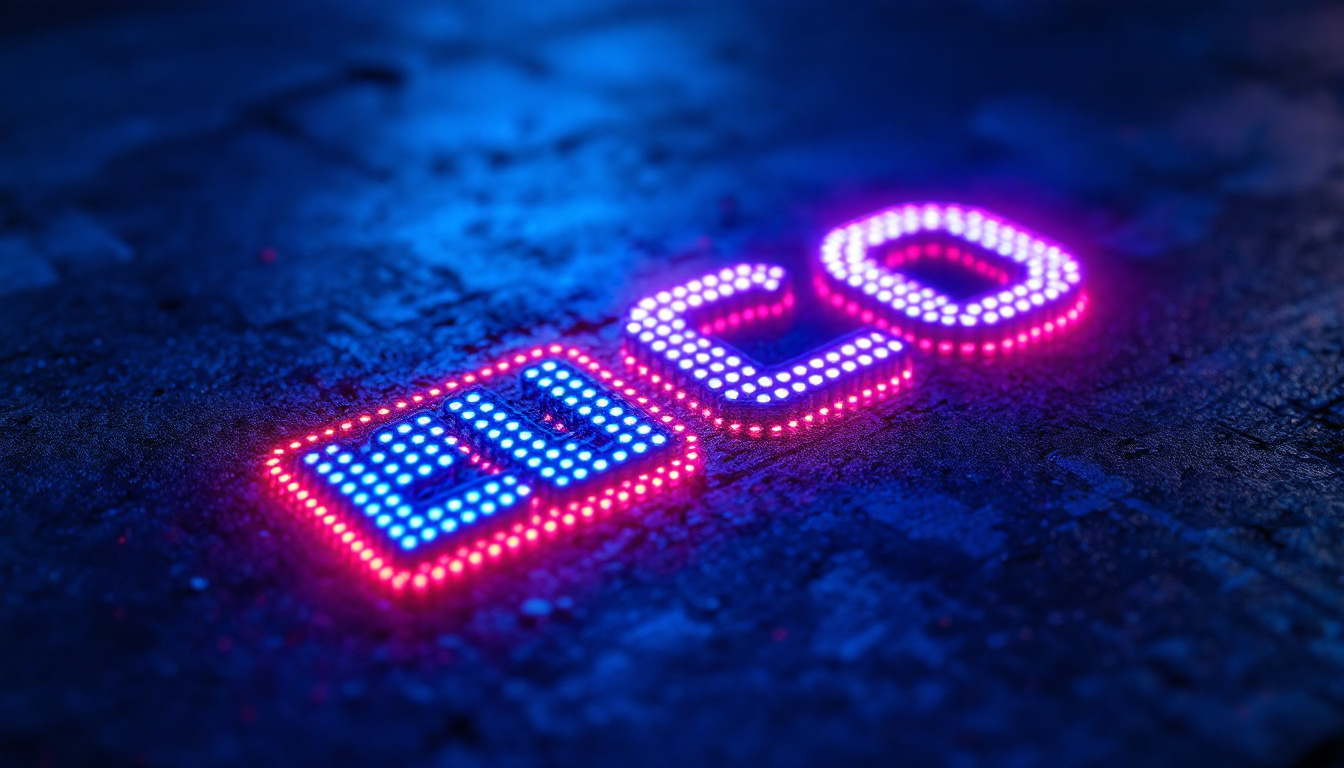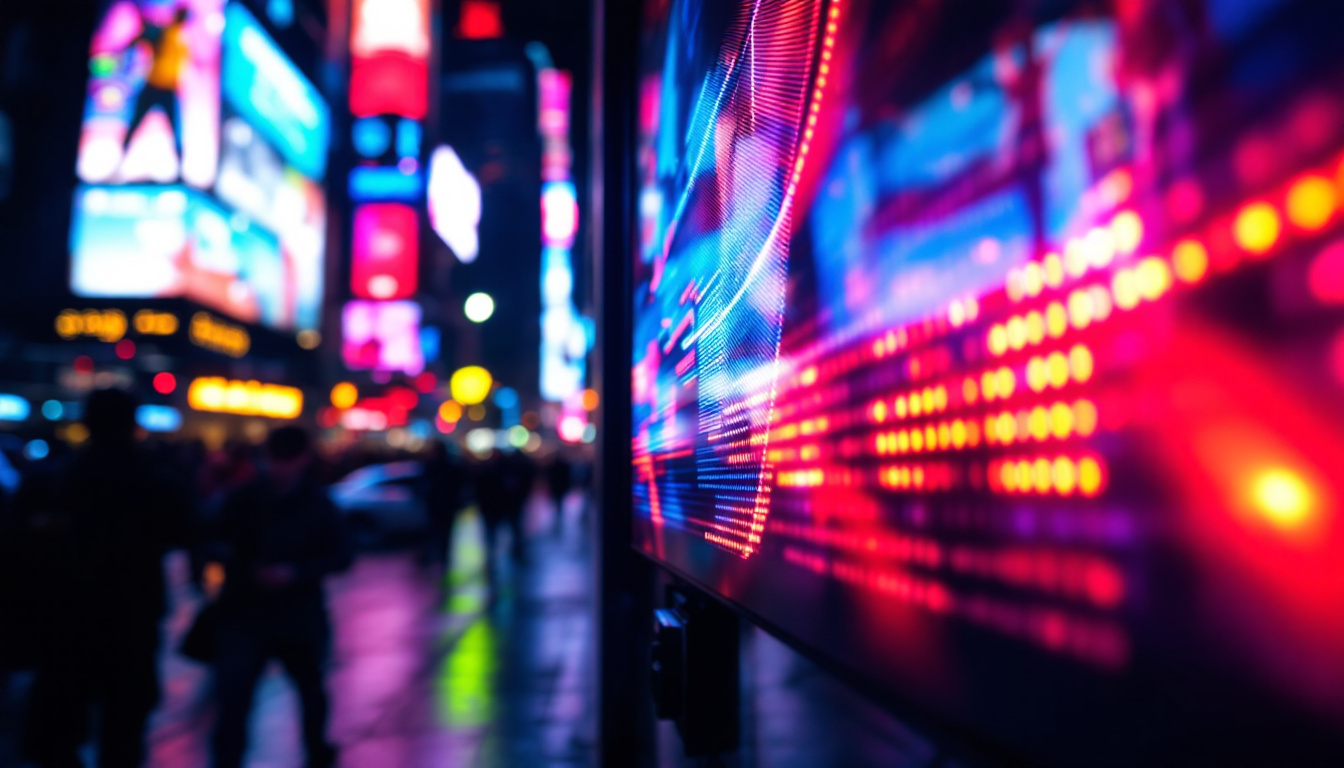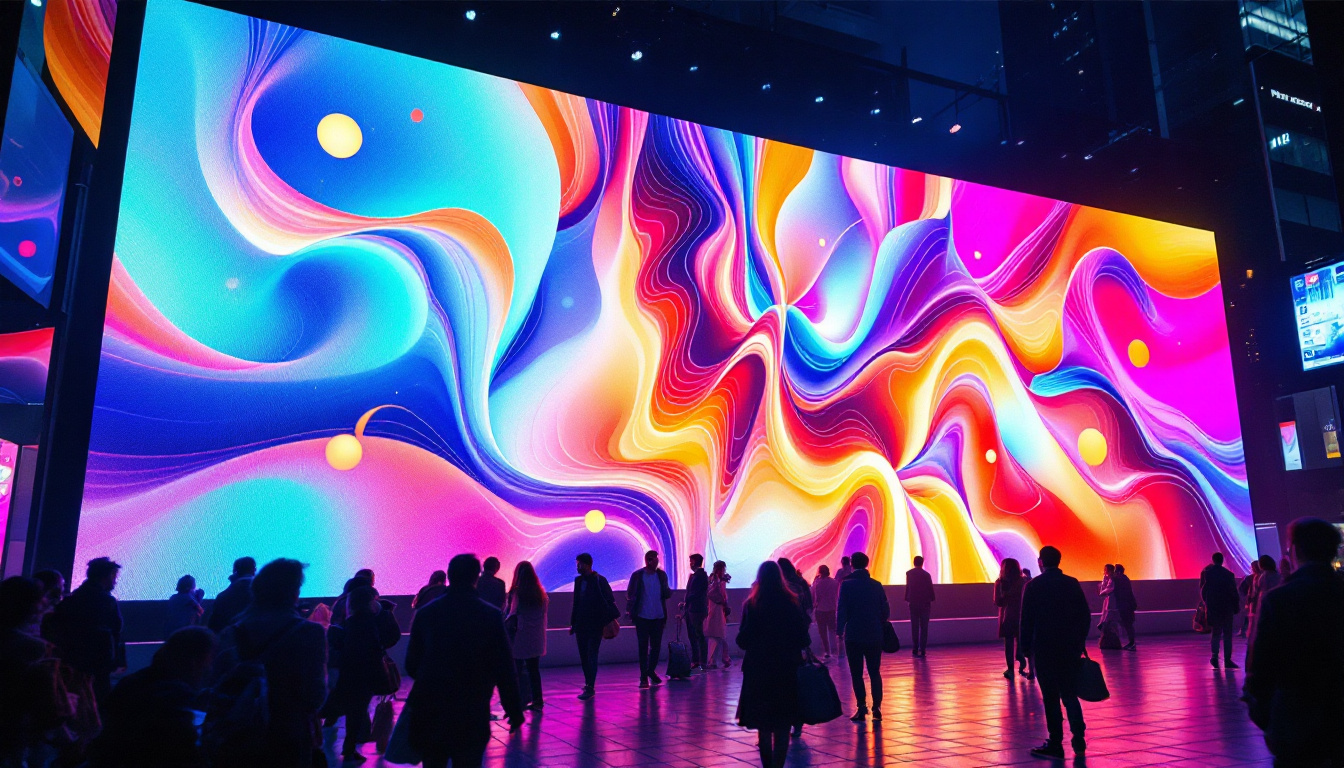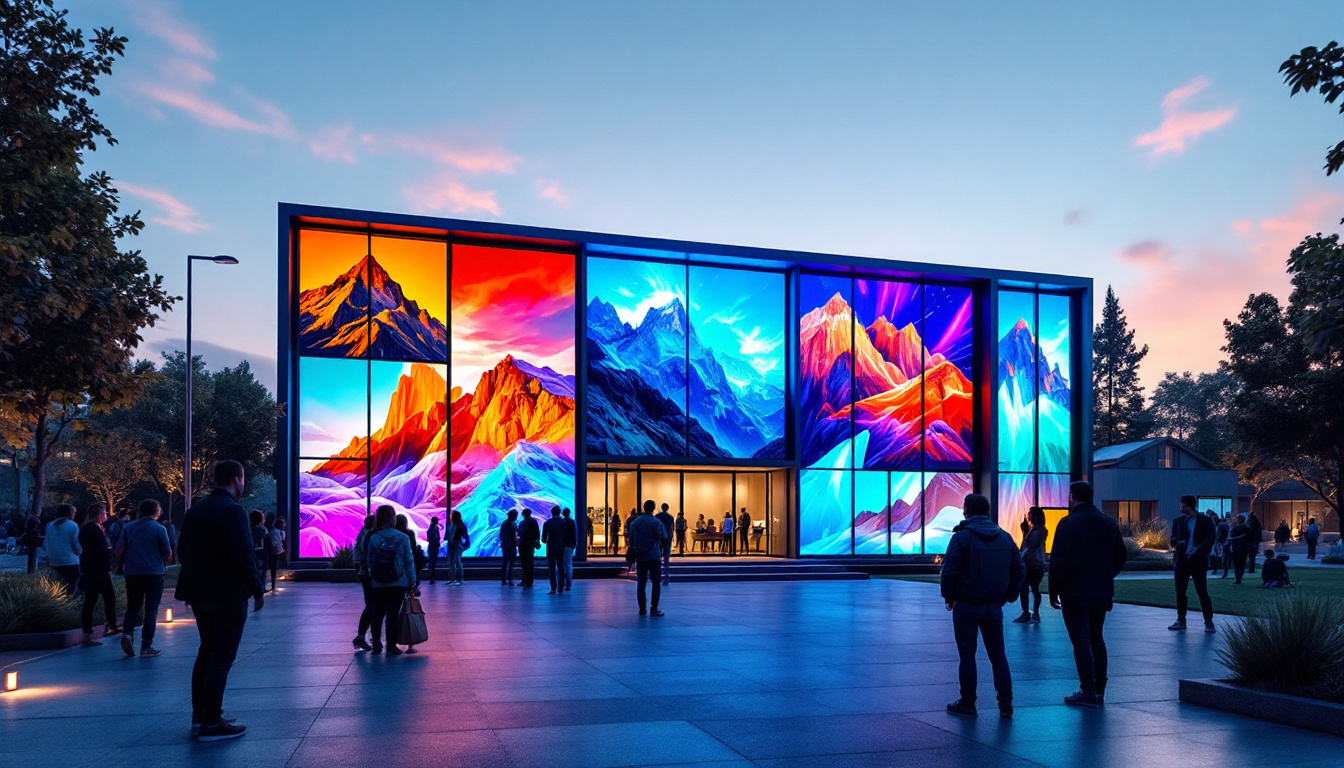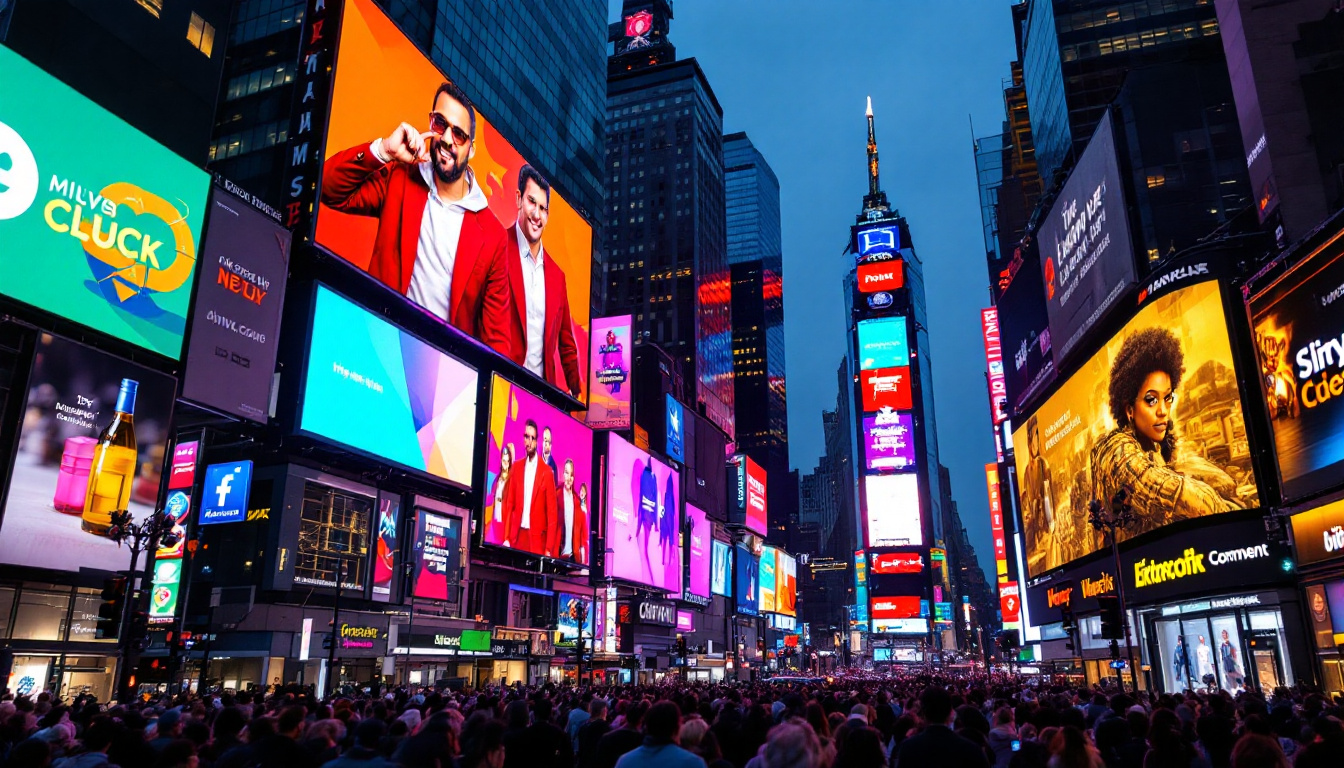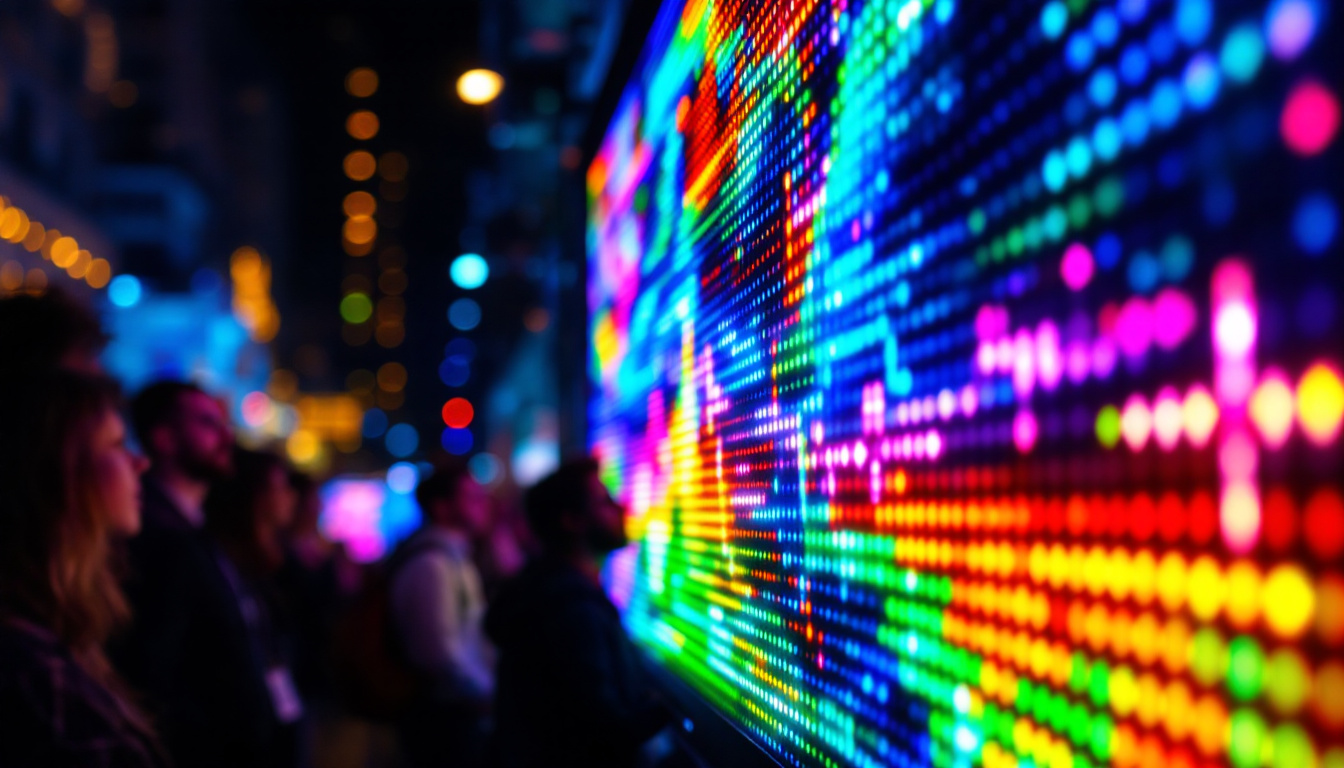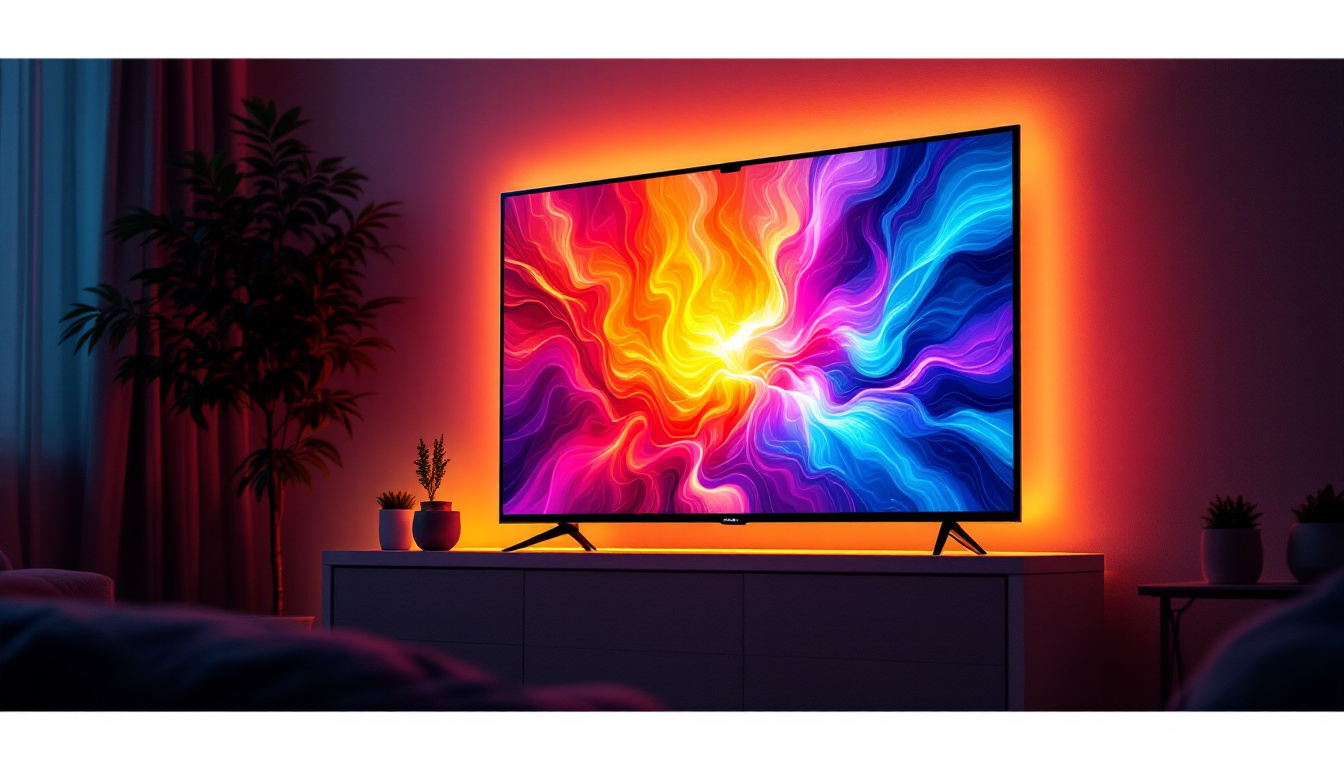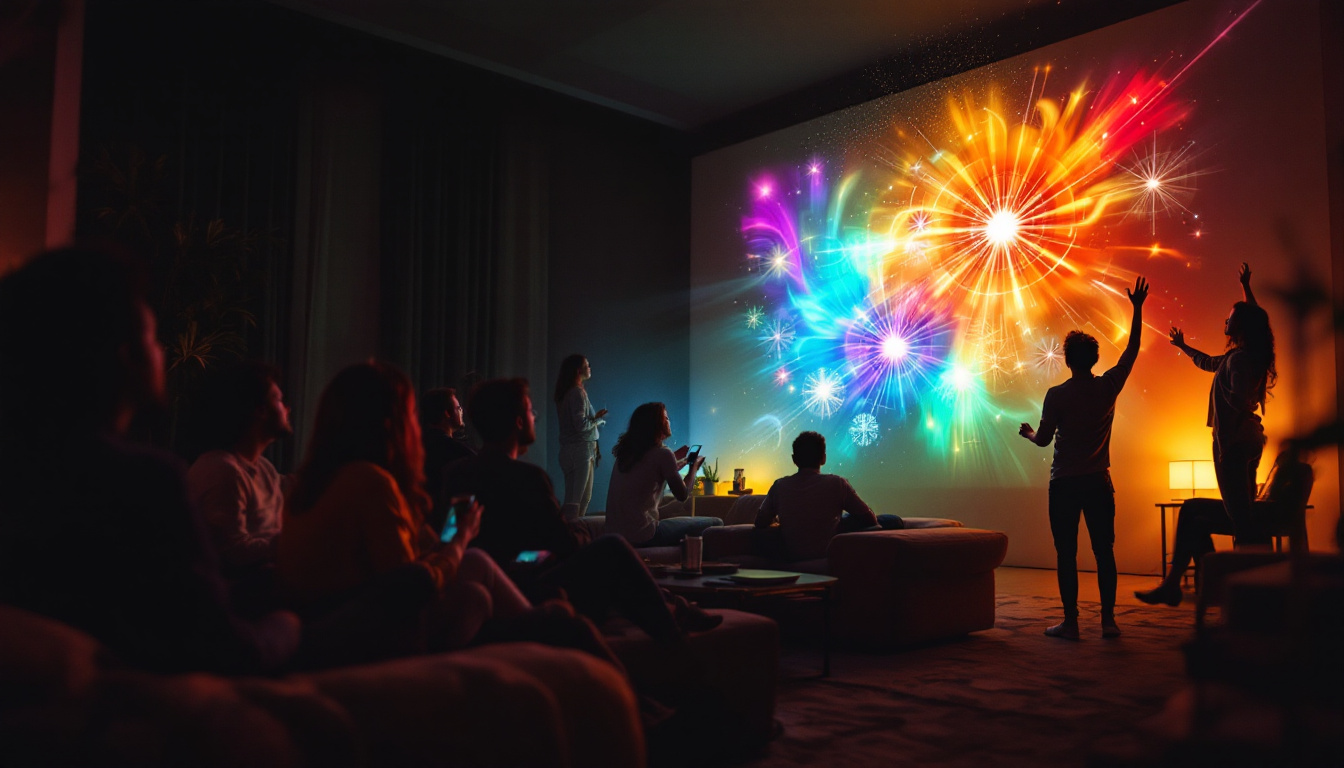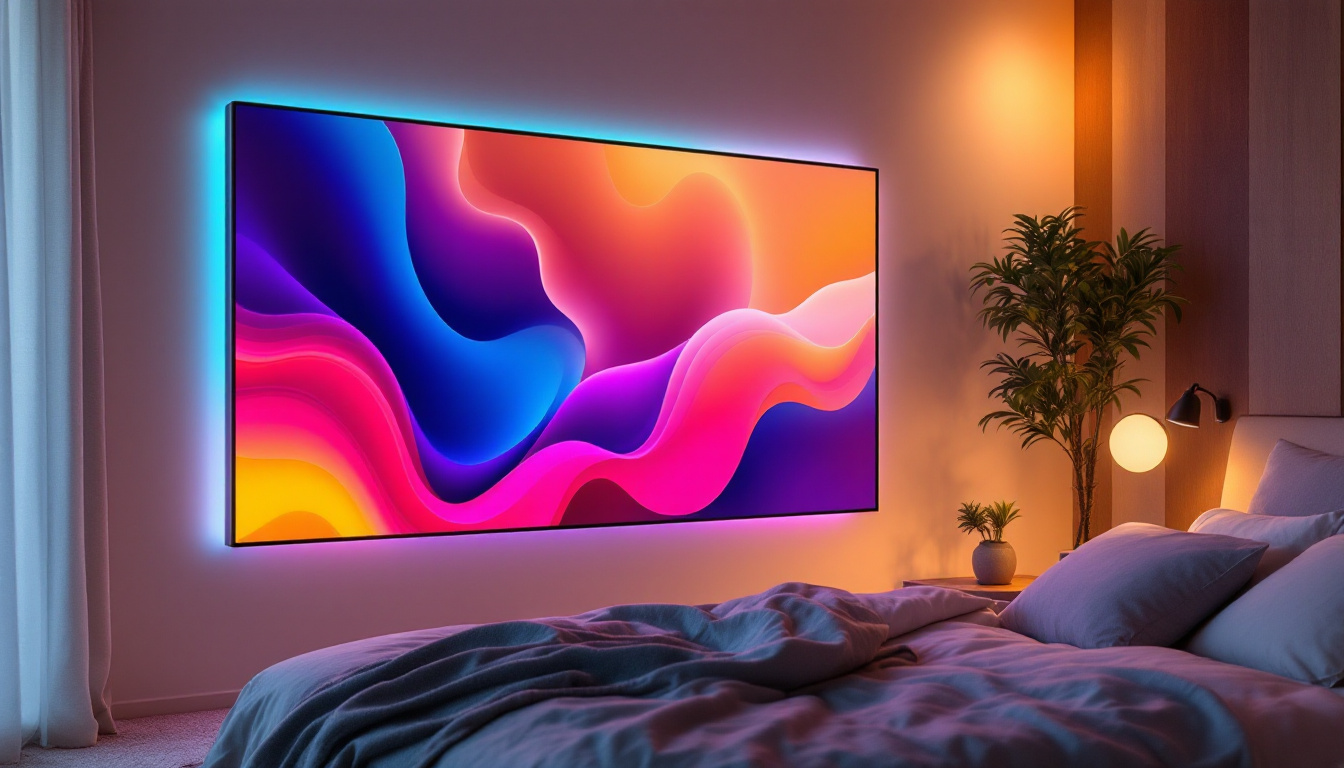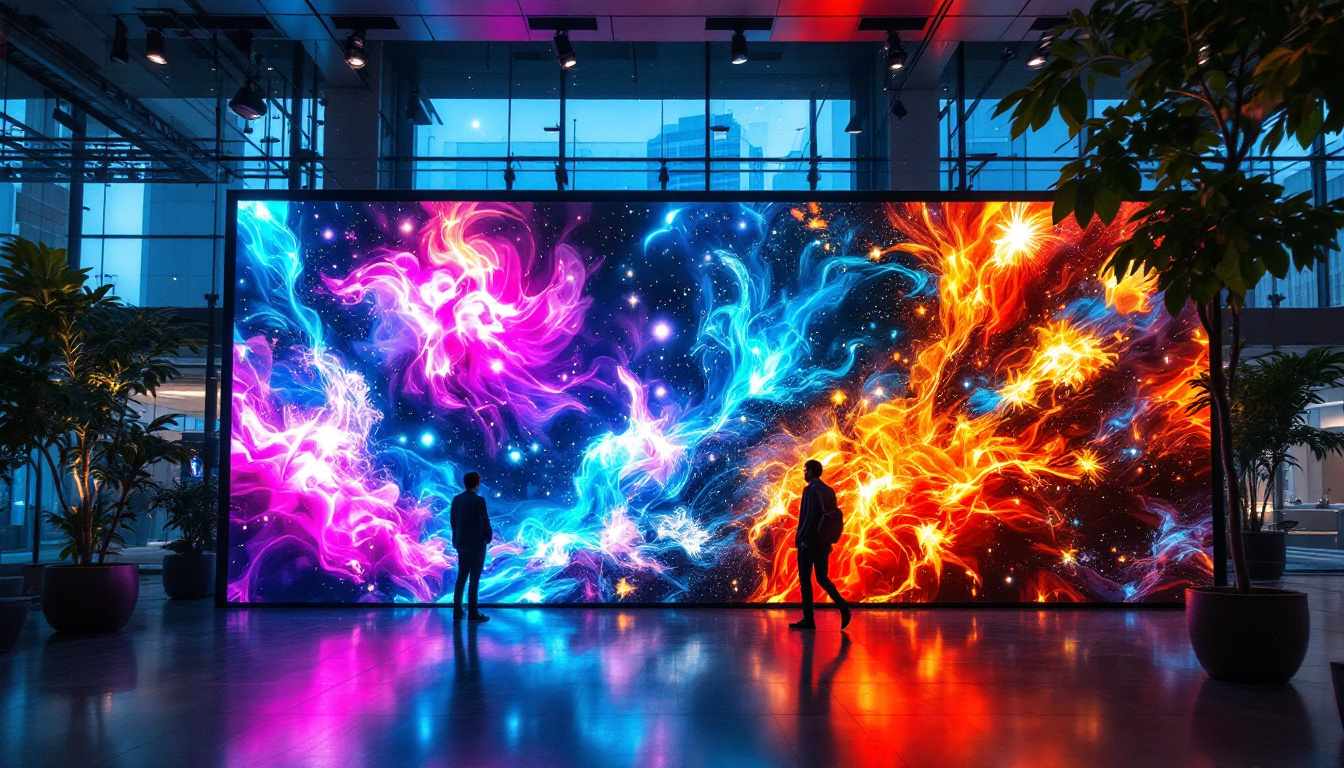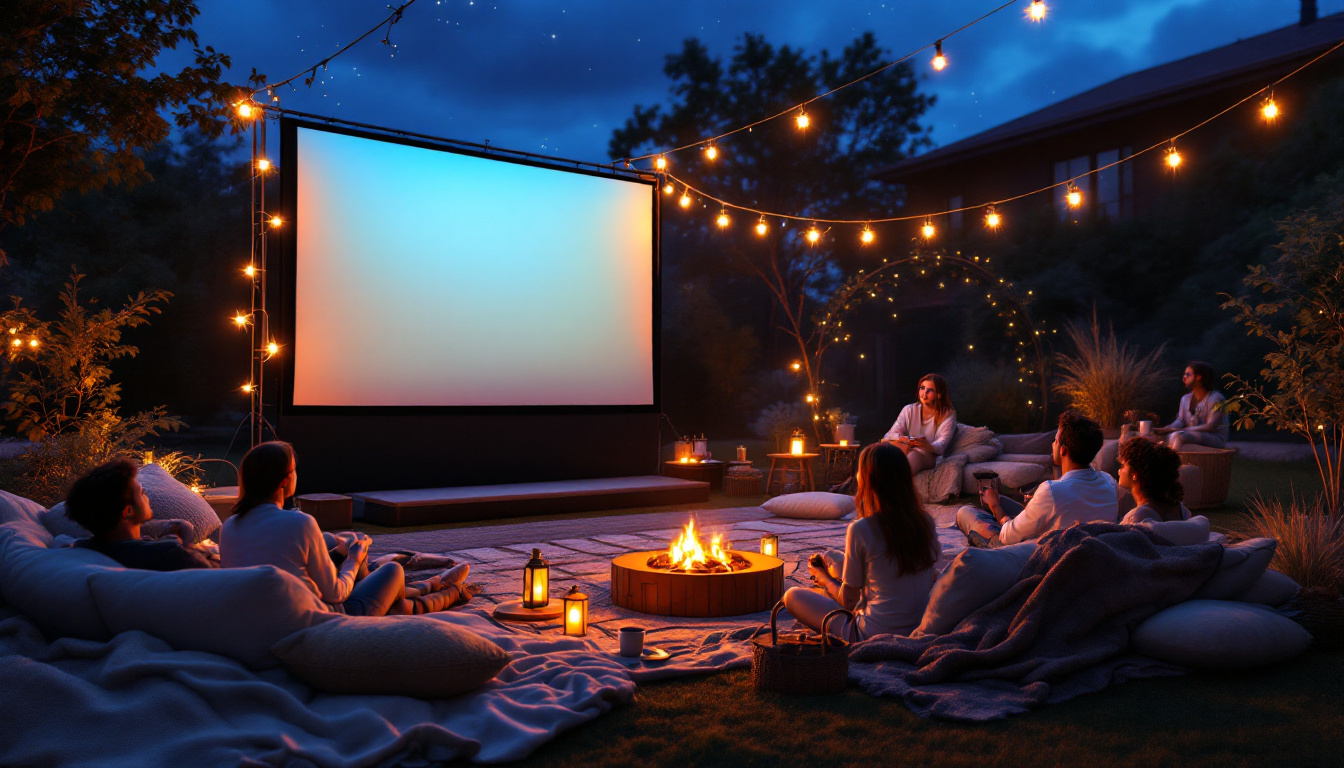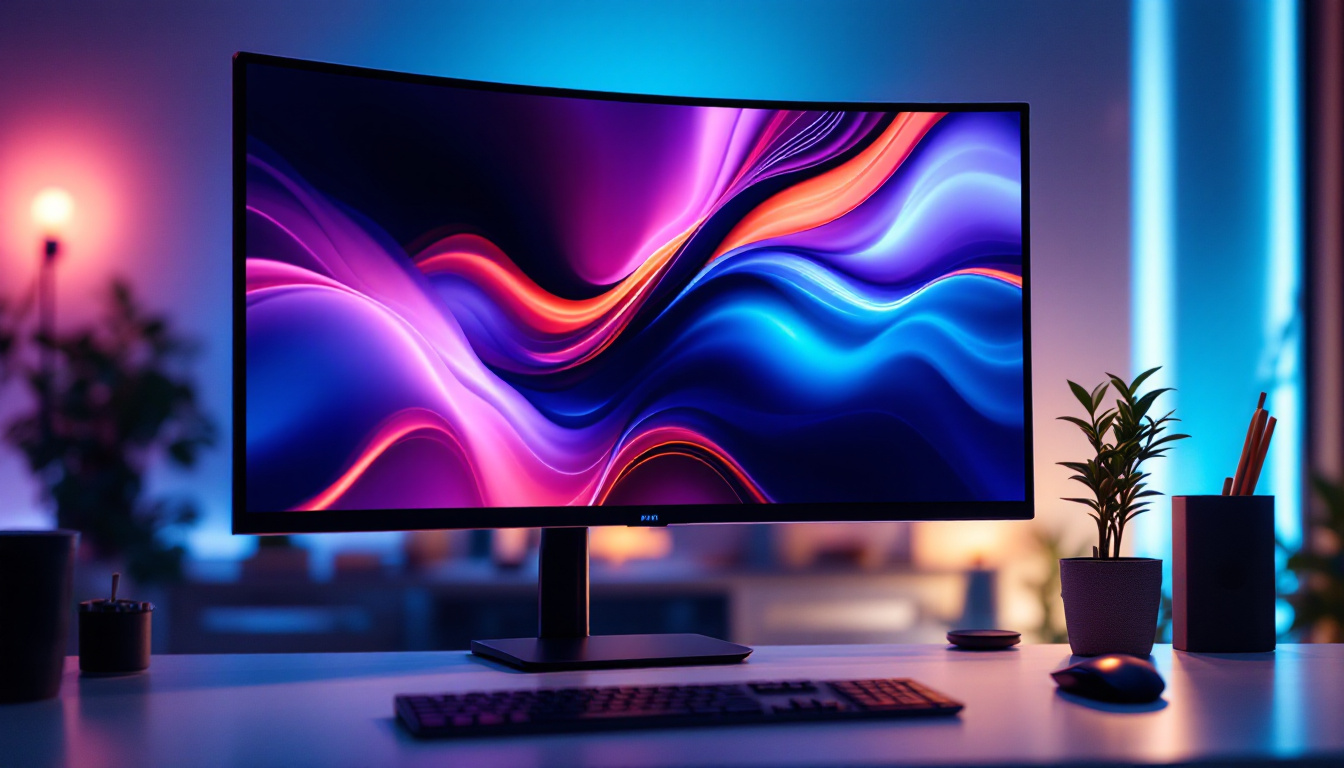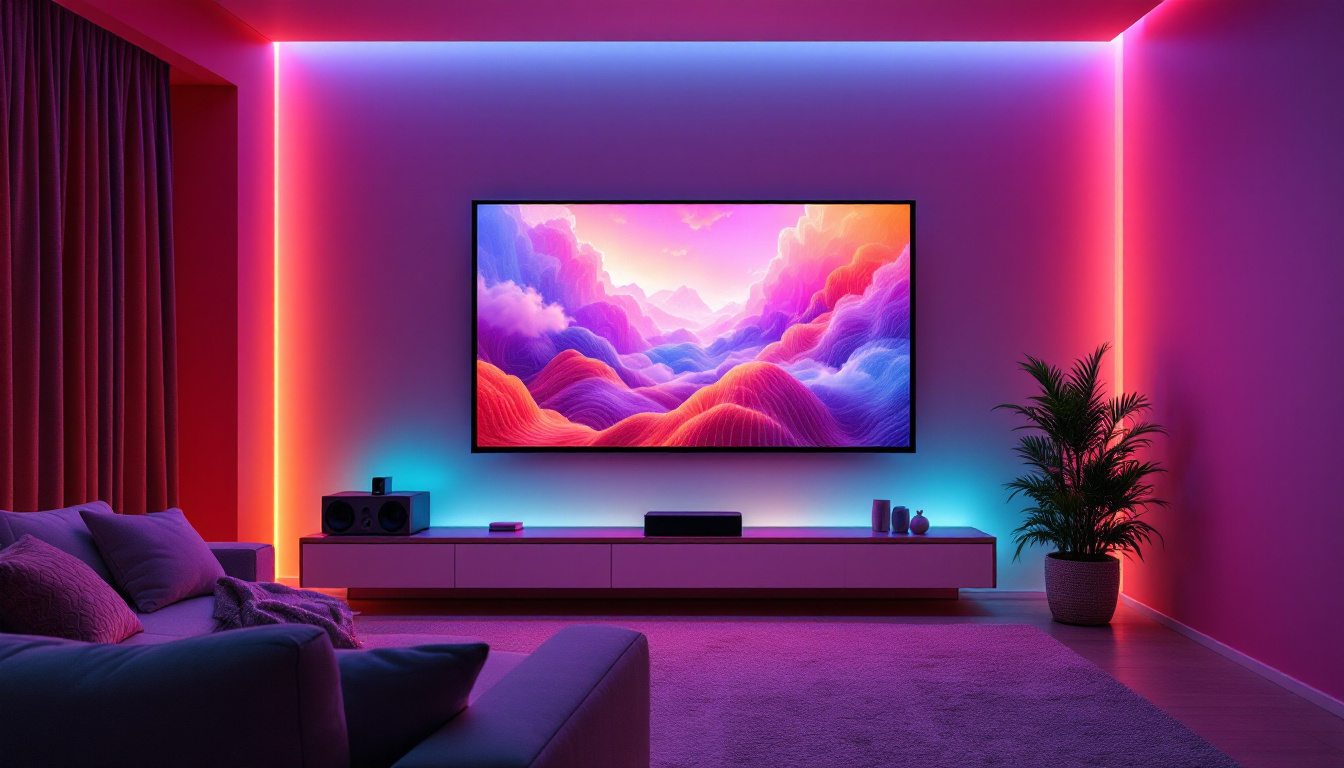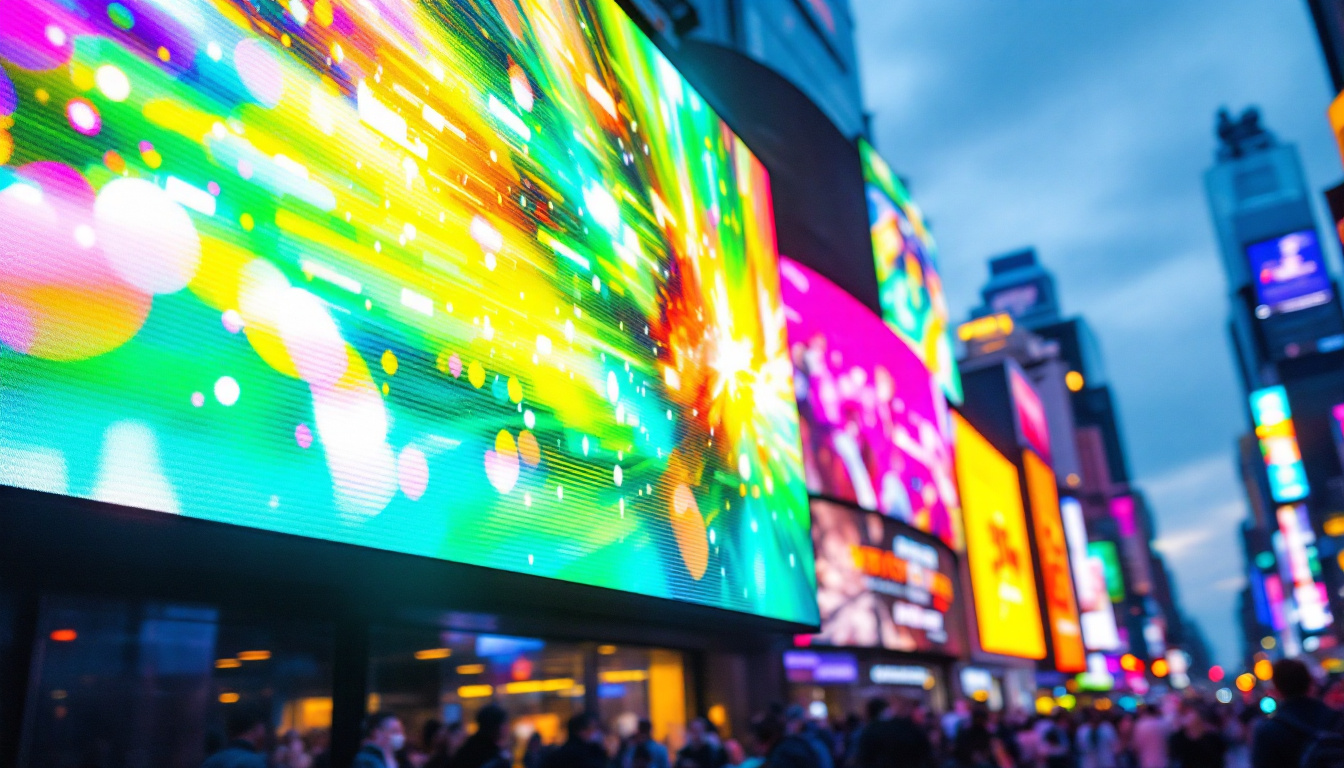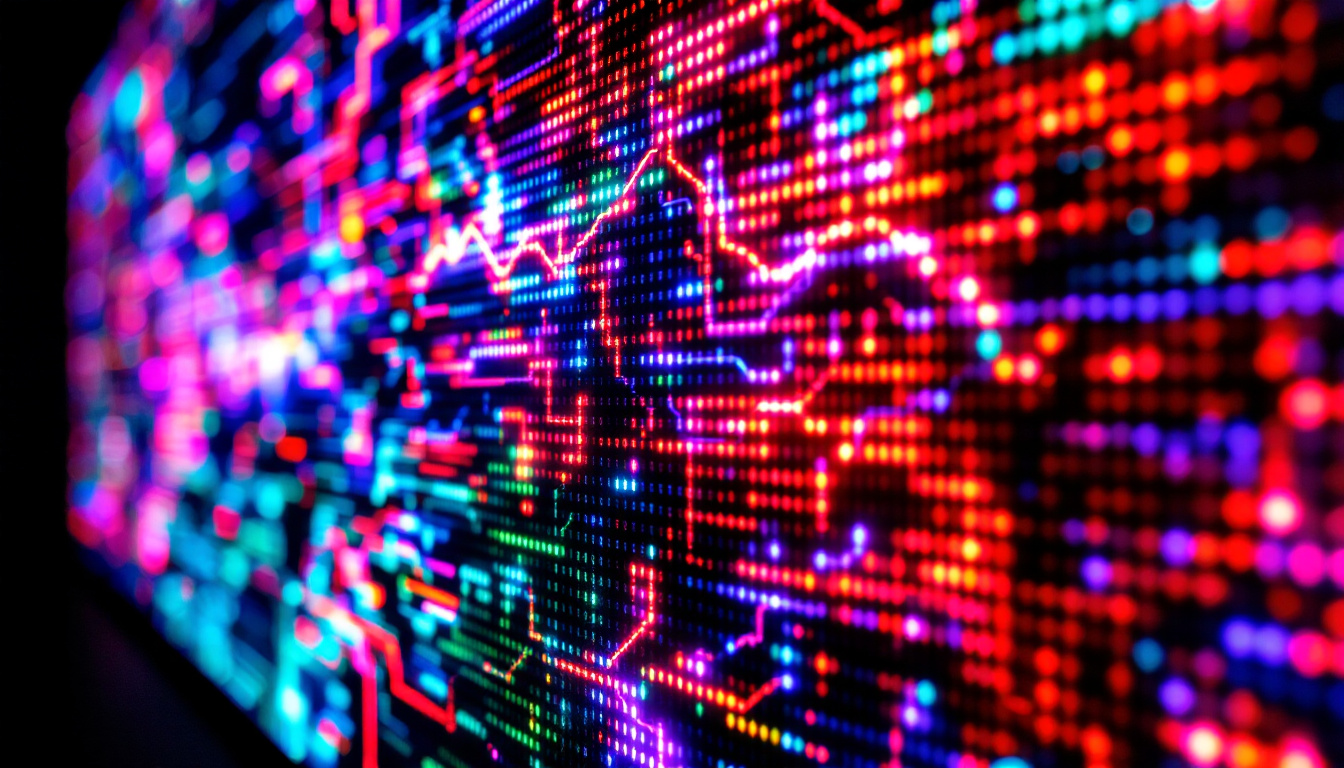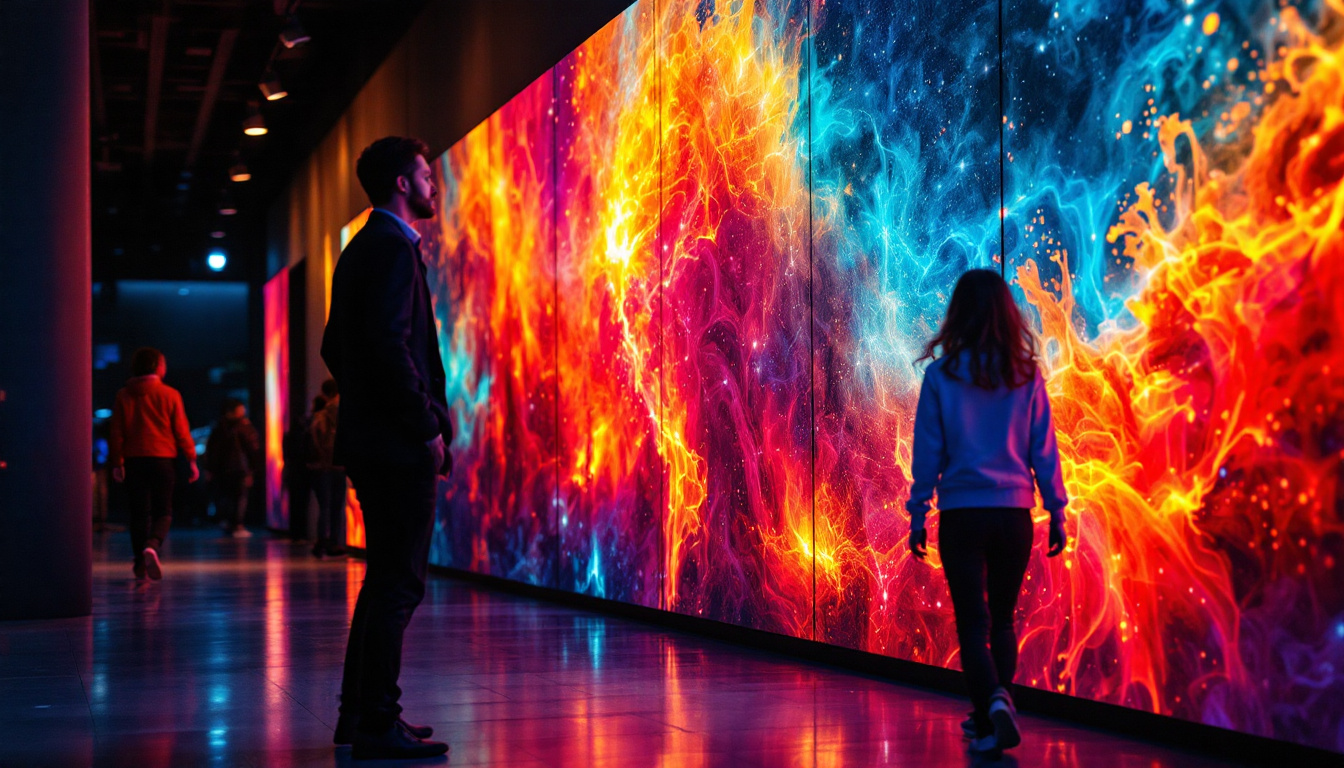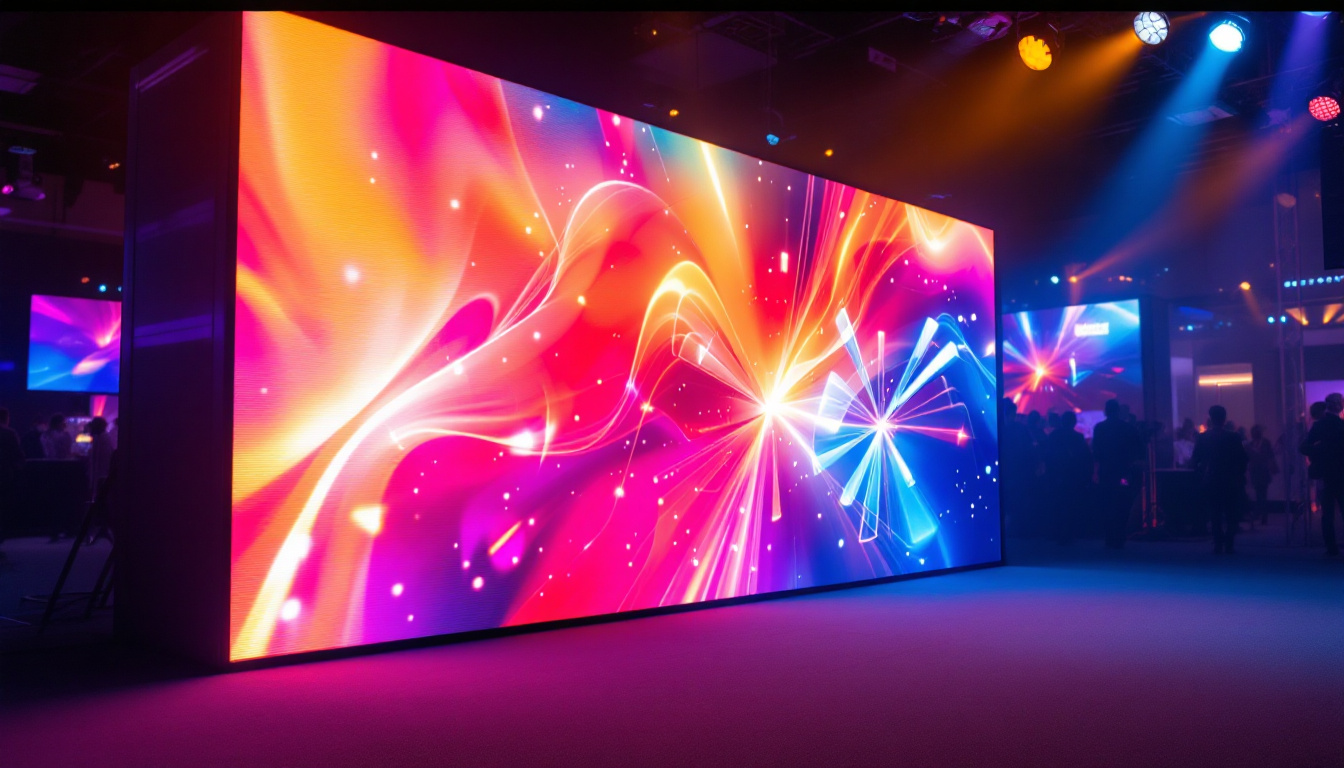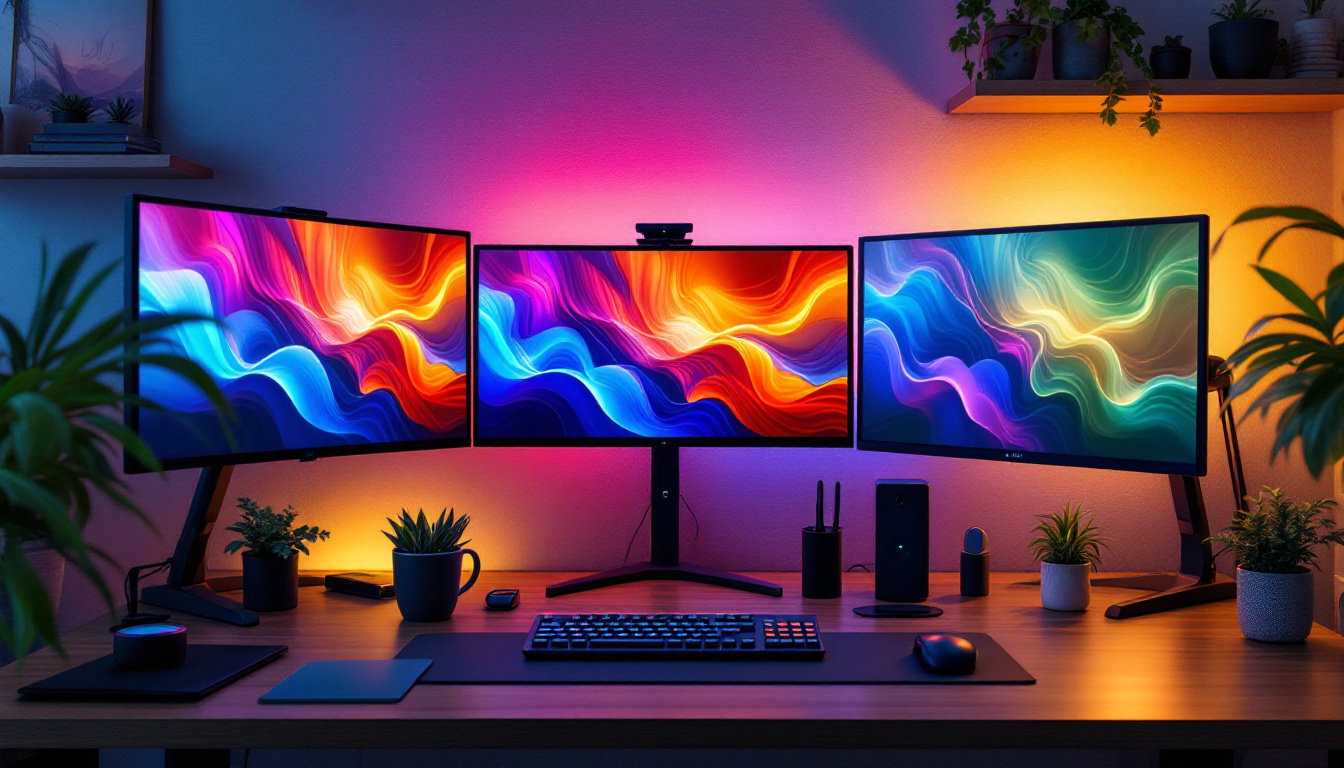In the realm of modern technology, LED displays have become a staple in various industries, from advertising to entertainment. Understanding the dimensions of these displays, such as converting 165 inches into feet, is essential for making informed decisions about installation and usage. This article delves into the significance of LED displays, the conversion of inches to feet, and the various applications of large-format screens.
Understanding LED Displays
LED displays utilize light-emitting diodes to create vibrant images and videos. They are known for their brightness, energy efficiency, and longevity compared to traditional display technologies. The versatility of LED screens allows them to be used in a wide range of environments, including indoor venues, outdoor billboards, and even in personal devices. From large-scale stadium screens to small handheld gadgets, LED technology has revolutionized the way we consume visual content, offering an immersive experience that captivates audiences across various platforms.
In recent years, the integration of smart technology with LED displays has further enhanced their functionality. Features such as touch sensitivity, interactivity, and connectivity to the internet allow for dynamic content updates and user engagement. This evolution has paved the way for innovative applications in advertising, education, and entertainment, where real-time information can be displayed, and user interaction can be facilitated through these advanced screens.
The Technology Behind LED Displays
At the core of LED display technology is the arrangement of diodes that emit light when an electric current passes through them. These diodes are grouped into pixels, which together form the images seen on the screen. The quality of an LED display is often measured by its pixel pitch, which refers to the distance between the centers of two adjacent pixels. A smaller pixel pitch results in a higher resolution and clearer image, making it ideal for close viewing distances. Furthermore, advancements in LED technology have led to the development of various types of displays, including OLED (Organic LED) and MicroLED, which offer even greater color accuracy and contrast ratios, pushing the boundaries of visual fidelity.
Another important aspect of LED technology is the color reproduction capability. By combining red, green, and blue (RGB) diodes, LED displays can produce a wide spectrum of colors, allowing for more lifelike images. The calibration of these colors is crucial for applications such as digital signage and broadcasting, where color accuracy can significantly affect viewer perception. Additionally, the refresh rate of LED displays plays a vital role in ensuring smooth motion in videos and animations, making them ideal for high-definition content.
Benefits of LED Displays
One of the primary advantages of LED displays is their exceptional brightness. This characteristic makes them suitable for outdoor use, where sunlight can wash out the visibility of traditional screens. Additionally, LED displays consume less power, making them more environmentally friendly and cost-effective in the long run. Their durability is another key benefit, as they can withstand harsh weather conditions, making them a preferred choice for outdoor advertising. The lifespan of an LED display can exceed 100,000 hours, significantly reducing the need for frequent replacements and maintenance.
Moreover, the lightweight nature of LED panels facilitates easier installation and transportation, which is particularly beneficial for temporary setups or events. The modular design of many LED systems allows for seamless scaling, enabling users to create custom display sizes and shapes to fit specific needs. This flexibility has made LED displays a popular choice for concerts, exhibitions, and corporate events, where visual impact is paramount. As technology continues to evolve, we can expect further enhancements in LED displays, including improved energy efficiency and even more innovative applications across various industries.
Converting 165 Inches to Feet
When discussing the size of an LED display, it’s common to encounter measurements in inches. For many applications, especially in the United States, converting these measurements into feet can provide a clearer understanding of the display’s dimensions. To convert inches to feet, one can use the simple formula: divide the number of inches by 12.
The Calculation
For a display that measures 165 inches, the conversion to feet is straightforward. By dividing 165 by 12, the result is 13.75 feet. This means that a 165-inch display is equivalent to 13 feet and 9 inches. Understanding this conversion is crucial for ensuring that the display fits within the desired installation space and meets the visual requirements of the environment.
Why Size Matters
The size of an LED display significantly impacts its effectiveness in various settings. Larger displays are often more visible from a distance, making them ideal for outdoor advertising or large venues. In contrast, smaller displays may be more suitable for indoor environments where viewers are closer to the screen. Knowing the size in feet helps in planning the layout and ensuring that the display complements the surrounding architecture.
Applications of 165-Inch LED Displays
LED displays of 165 inches are versatile and can be used in numerous applications. Their size and quality make them suitable for various environments, enhancing the viewing experience for audiences. Below are some common uses for large-format LED displays.
Advertising and Marketing
One of the most prominent applications of 165-inch LED displays is in advertising. Businesses utilize these screens to showcase dynamic advertisements, promotions, and brand messages. The high visibility and vibrant colors of LED displays capture the attention of passersby, making them effective tools for driving sales and increasing brand awareness.
Events and Entertainment
In the entertainment industry, large LED displays are often used at concerts, sporting events, and festivals. They provide audiences with an enhanced viewing experience by displaying live feeds, graphics, and animations. The immersive quality of these displays can significantly elevate the overall atmosphere of an event, making it more engaging for attendees.
Corporate and Educational Use
Many corporations and educational institutions are adopting LED displays for presentations, training sessions, and lectures. These displays allow for clear visibility of content, ensuring that everyone in the room can see the information being presented. Furthermore, the ability to display multimedia content enhances the learning experience, making it more interactive and informative.
Choosing the Right LED Display
Selecting the appropriate LED display involves considering various factors beyond just size. Understanding the specific needs of the intended application is crucial for making an informed decision.
Resolution and Pixel Pitch
When choosing an LED display, resolution and pixel pitch are critical factors to consider. A higher resolution is essential for applications that require detailed images, such as video walls or close-up viewing scenarios. Conversely, a lower resolution may suffice for larger viewing distances, such as outdoor advertising. Assessing the pixel pitch will help determine the clarity and sharpness of the display.
Brightness Levels
The brightness of an LED display is measured in nits, and it is vital for ensuring visibility in various lighting conditions. Outdoor displays typically require higher brightness levels to compete with sunlight, while indoor displays may function well with lower brightness. Understanding the environment where the display will be installed is essential for selecting the right brightness level.
Installation Considerations
Proper installation of LED displays is crucial for optimal performance and longevity. There are several key factors to consider during the installation process.
Location and Mounting Options
The location of the LED display plays a significant role in its effectiveness. Factors such as viewing angles, distance from the audience, and surrounding lighting conditions should be evaluated. Additionally, choosing the right mounting option—whether wall-mounted, ceiling-mounted, or freestanding—can greatly influence the display’s visibility and accessibility.
Power and Connectivity
LED displays require a reliable power source and appropriate connectivity for content management. Ensuring that the installation site has adequate electrical supply and data connections is essential for smooth operation. Planning for these requirements in advance can prevent complications during installation and setup.
Maintenance and Care for LED Displays
To ensure the longevity and performance of LED displays, regular maintenance is essential. Proper care can prevent issues and extend the lifespan of the technology.
Routine Cleaning
Dust and debris can accumulate on the surface of LED displays, affecting image quality. Regular cleaning with appropriate materials is necessary to maintain clarity. It is advisable to follow manufacturer guidelines for cleaning to avoid damaging the display.
Software Updates and Troubleshooting
Keeping the software of LED displays up to date is vital for optimal performance. Regular updates can enhance functionality and security. Additionally, being familiar with common troubleshooting techniques can help address minor issues before they escalate into significant problems.
The Future of LED Displays
The evolution of LED display technology continues to advance, with innovations that promise even greater capabilities. Future developments may include enhanced resolution, improved energy efficiency, and more flexible display options.
Emerging Trends
One emerging trend in the LED display market is the integration of smart technology. Smart displays can connect to the internet, allowing for remote management and real-time content updates. This capability is particularly beneficial for businesses that require dynamic advertising solutions.
Sustainability in LED Technology
As environmental concerns grow, the LED industry is also focusing on sustainability. Manufacturers are exploring ways to reduce energy consumption and use recyclable materials in the production of LED displays. This shift towards eco-friendly practices is likely to shape the future of LED technology.
Conclusion
Understanding the dimensions and applications of LED displays, particularly the conversion of 165 inches to feet, is essential for making informed decisions in various industries. As technology continues to evolve, the potential for LED displays remains vast, offering exciting opportunities for advertising, entertainment, and education. By considering factors such as resolution, brightness, and installation requirements, businesses and organizations can maximize the benefits of these dynamic displays.
In a world where visual communication is paramount, LED displays stand out as a powerful tool for engagement and interaction. Whether used for marketing, events, or education, the impact of a well-placed LED display can be profound, capturing attention and conveying messages effectively.
Explore Cutting-Edge LED Displays with LumenMatrix
Ready to elevate your space with the latest in LED display technology? LumenMatrix offers a comprehensive range of solutions tailored to your needs. From vibrant Indoor and Outdoor LED Wall Displays to innovative options like Vehicle LED Displays, LED Posters, and even Custom LED Displays, our products are designed to make your message shine. Experience the future of visual communication with our LED Sports Displays, Floor LEDs, All-in-One solutions, and Transparent Displays. Check out LumenMatrix LED Display Solutions today and transform the way you engage with your audience.

